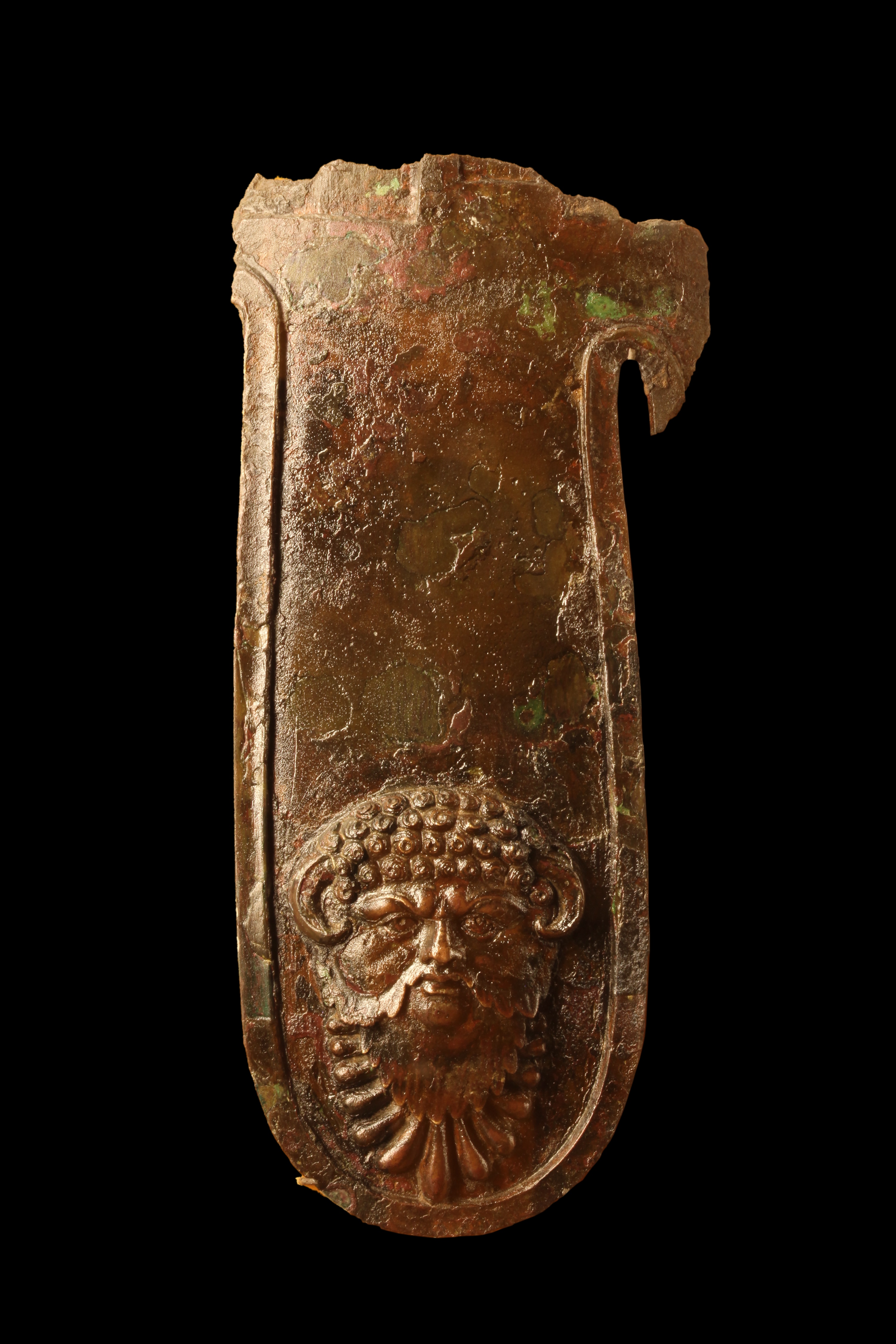Pteruges on:
[Wikipedia]
[Google]
[Amazon]
 Pteruges (also spelled pteryges; ) refers to strip-like defences for the upper parts of limbs attached to
Pteruges (also spelled pteryges; ) refers to strip-like defences for the upper parts of limbs attached to
 Pteruges formed a defensive skirt of leather or multi-layered fabric (linen) strips or lappets worn dependant from the waists of
Pteruges formed a defensive skirt of leather or multi-layered fabric (linen) strips or lappets worn dependant from the waists of
Article about how to build pteruges
Roman-era clothing Greek clothing Byzantine clothing Ancient_Roman_legionary_equipment Ancient Greek military terminology Ancient Greek military equipment Byzantine military equipment
 Pteruges (also spelled pteryges; ) refers to strip-like defences for the upper parts of limbs attached to
Pteruges (also spelled pteryges; ) refers to strip-like defences for the upper parts of limbs attached to armor
Armour (British English) or armor (American English; see spelling differences) is a covering used to protect an object, individual, or vehicle from physical injury or damage, especially direct contact weapons or projectiles during combat, or f ...
in the Greco-Roman world
The Greco-Roman civilization (; also Greco-Roman culture; spelled Graeco-Roman in the Commonwealth), as understood by modern scholars and writers, includes the geographical regions and countries that culturally—and so historically—were dir ...
.
Appearance and variation
 Pteruges formed a defensive skirt of leather or multi-layered fabric (linen) strips or lappets worn dependant from the waists of
Pteruges formed a defensive skirt of leather or multi-layered fabric (linen) strips or lappets worn dependant from the waists of Roman
Roman or Romans most often refers to:
* Rome, the capital city of Italy
* Ancient Rome, Roman civilization from 8th century BC to 5th century AD
*Roman people, the people of ancient Rome
*''Epistle to the Romans'', shortened to ''Romans'', a lett ...
and Greek
Greek may refer to:
Greece
Anything of, from, or related to Greece, a country in Southern Europe:
*Greeks, an ethnic group.
*Greek language, a branch of the Indo-European language family.
**Proto-Greek language, the assumed last common ancestor ...
cuirass
A cuirass (; french: cuirasse, la, coriaceus) is a piece of armour that covers the torso, formed of one or more pieces of metal or other rigid material. The word probably originates from the original material, leather, from the French '' cuirac ...
es of warriors and soldiers, defending the hips and thighs. Similar defenses, epaulette
Epaulette (; also spelled epaulet) is a type of ornamental shoulder piece or decoration used as insignia of rank by armed forces and other organizations. Flexible metal epaulettes (usually made from brass) are referred to as ''shoulder scales' ...
-like strips, were worn on the shoulders, protecting the upper arms. Both sets of strips are usually interpreted as belonging to a single garment worn under a cuirass, though in a linen cuirass (''linothorax
The linothorax (pronounced ; from the grc, λινοθώραξ ) is a type of upper body armor that was used throughout the ancient Mediterranean world. The term ''linothorax'' is a modern term based on the Greek , which means "wearing a breastpl ...
'') they may have been integral. The cuirass itself could be variously constructed: of plate-bronze (muscle cuirass
In classical antiquity, the muscle cuirass ( la, lorica musculata), anatomical cuirass, or heroic cuirass is a type of cuirass made to fit the wearer's torso and designed to mimic an idealized male human physique. It first appears in late Archaic ...
), ''linothorax'', scale, lamellar or mail. ''Pteruges'' could be arranged as a single row of longer strips or in two or more layers of shorter, overlapping lappets of graduated length.
Possible later use
During theMiddle Ages
In the history of Europe, the Middle Ages or medieval period lasted approximately from the late 5th to the late 15th centuries, similar to the post-classical period of global history. It began with the fall of the Western Roman Empire ...
, especially in the Byzantine Empire
The Byzantine Empire, also referred to as the Eastern Roman Empire or Byzantium, was the continuation of the Roman Empire primarily in its eastern provinces during Late Antiquity and the Middle Ages, when its capital city was Constantinopl ...
and in the Middle East
The Middle East ( ar, الشرق الأوسط, ISO 233: ) is a geopolitical region commonly encompassing Arabian Peninsula, Arabia (including the Arabian Peninsula and Bahrain), Anatolia, Asia Minor (Asian part of Turkey except Hatay Pro ...
, such strips are depicted depending from the back and sides of helmets, to protect the neck while leaving it reasonably free to move. However, no archaeological remains of leather strip defences for helmets have been found. Artistic depictions of such strip-like elements can also be interpreted as vertically-stitched quilted textile defences.Dawson, Timothy: Byzantine Infantryman, Oxford (2007), pp. 20–21
See also
*Roman military personal equipment
Roman military personal equipment was produced in large numbers to established patterns, and used in an established manner. These standard patterns and uses were called the ''res militaris'' or ''disciplina''. Its regular practice during the Roma ...
* Ancient Roman military clothing
References
Bibliography
* *{{cite book , first = Timothy , last = Dawson , title = Byzantine Infantryman. Eastern Roman Empire c.900–1204 , publisher = Osprey , year = 2007 , isbn = 978-1-84603-105-2External links
Article about how to build pteruges
Roman-era clothing Greek clothing Byzantine clothing Ancient_Roman_legionary_equipment Ancient Greek military terminology Ancient Greek military equipment Byzantine military equipment